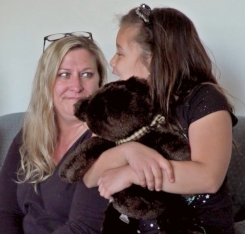VITAS Advantage: Case Study on Complex Modalities for Physicians
VITAS Case Study: Patient with Advanced Lung Cancer
MK*, a 67-year-old male who was diagnosed six months ago with lung cancer, has been hospitalized twice in the past two months for nausea, vomiting, and dehydration following anti-tumor treatments. Today, MK is hospitalized again, this time for a new pathologic fracture and pain.
During his hospital stay, MK’s oncologist initiates a goals-of-care conversation with MK and his wife.
MK and his wife agree to cease chemotherapy, and MK is referred to hospice care at home supported by regular interdisciplinary team visits, respiratory therapy, high-flow oxygen, symptom management, palliative radiation for pain, appetite and bowel regimen support, and nonpharmacological approaches (e.g., guided imagery/relaxation) for anxiety and pain.
Over the next three months, MK remains at home, able to spend time with his wife, children, and grandchildren. Hospice care teams visit regularly, and MK and his wife meet with a hospice social worker and chaplain to plan his memorial service. Twice, VITAS Intensive Comfort Care® (ICC) is provided at MK’s bedside for 2-3 days to manage agitation, shortness of breath, and pain, per Medicare guidelines.
Two weeks after the second incidence of ICC care, MK dies peacefully at home, surrounded by his family.
*These initials represent an anonymized patient and are used for the purposes of education only.
Supportive Palliative Radiation, a VITAS Care Option, Wanes Among Many Hospice Providers
Even though the number of freestanding hospice programs grew by more than 500 between 2011-2018, far fewer programs offered palliative radiation to end-of-life patients with advanced cancer during the same 7-year period.
This reduction in supportive palliative care stands in contrast to evidence and current clinical hospice practices, including VITAS data, showing that patient-centered radiotherapy in particular can provide comfort and enhanced quality of life for patients who are receiving hospice care for advanced cancer.
While hospice programs grew numerically to 2,948 ($15 billion total expenses) from 2,404 ($1.2 billion total expenses) between 2011-2018, their radiotherapy expenses dropped by 75% ( $6.3 million to $1.3 million), according to Pennsylvania and Connecticut researchers. The raw number of hospice programs offering palliative radiotherapy dropped by nearly half, from 307 to 159.
The researchers’ 2020 findings in JAMA Oncology linked the drop in aggressive palliative modalities to 2016 hospice reimbursement changes by the Centers for Medicare and Medicaid Services (CMS) for palliative interventions.
According to study coauthor Shi-Yi Wang, MD, of Yale Cancer Center, quoted in Medscape (May 16, 2020), “the results suggest that many hospice patients may be missing out on palliative radiotherapy that might make their final days more comfortable… Palliative radiotherapy can reduce pain and symptoms, such as radiotherapy for bone metastasis, and the side effects of radiotherapy are minor. Symptom relief can improve quality of life for these patients.
Likewise, a 2017 study in the Journal of Palliative Medicine proposes that “hospice services provide better monitoring, palliative treatment, and increased social support, factors which have individually been associated with improved survival.”
Complex Modalities: The VITAS Advantage
VITAS offers many complex modalities and comfort-focused treatments that other hospice providers do not. Palliative radiation is among numerous modalities to manage symptoms, address pain, provide comfort, and enhance hospice patients’ quality of life. An independent analysis, in fact, shows that palliative procedures by VITAS have increased.*
Supported by clinical expertise, 24/7 availability, and the VITAS open formulary, additional VITAS-provided modalities include:
- Intravenous therapies for pain management, hydration, antibiotics, etc.
- Paracentesis and thoracentesis
- Chest tube/PleurX
- High-flow oxygen therapy
- Palliative blood transfusions
- BiPAP, CPAP, and Trilogy non-invasive ventilation
- PEG-tube care and tube feedings
*Internal VITAS data on file
Sources:
Hsu, H., and Wang, S. (2020). Trends in provision of palliative radiotherapy and chemotherapy among hospices in the United States, 2011-2018. JAMA Oncology (Research Letter), 6(7):1106-1108.
Duggan, K & Hildebrand Duffus, S. (2017). The impact of hospice services in the care of patients with advanced stage nonsmall cell lung cancer. Journal of Palliative Medicine, 20(1):29-34.

